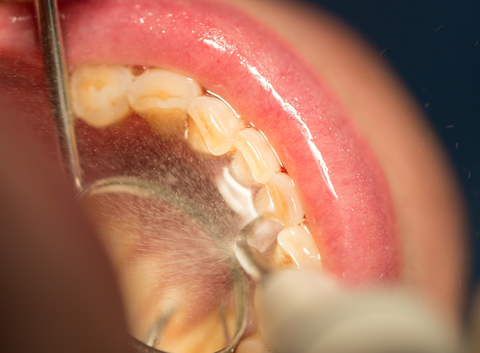8 advantages of horse therapy
Using horses to enhance one’s physical and mental wellbeing is not a novel concept. According to legend, Hippocrates suggested the potential value of horses in the management of health. But it wasn’t until the 1960s that horse therapy became popular in the modern world. In addition to a number of factors that set horse therapy in Victoria apart from other types of rehabilitation, there are a number of reasons why it might be regarded effective. The fact that humans and animals may communicate without using words is one advantage of horse therapy. This creates a channel of communication that might not be crossed if the patient tried to speak with a conventional therapist. In this post, we’ll talk about some of the most potent advantages that using equine therapy could offer you or a loved one.
1. “No Judgment”
Animals and humans can communicate without words, as was already noted. People are frequently able to be more vulnerable around animals than they are around other people. However, the communication that they do exchange is typically done entirely on an emotional basis. In other words, being around horses fosters the development of an unbiased, nonjudgmental relationship in which a person can discover new ways to communicate and comprehend themselves. Horses are great companions for anyone trying to manage a mental condition since they are also quite temperamental and perceptive.
2. Mirroring
The fact that these animals naturally reflect the emotions that a patient may be feeling, whether or not they are conscious of it, is one of the special aspects of equine therapy. Due of their high empathy, horses sometimes reflect the patient’s unhappiness, anguish, or discomfort back to them. Should the patient actively try to see their horse’s conduct as a reflection of their own, this can aid in the promotion of self-awareness and open-mindedness. This feedback loop can assist someone in understanding their emotional responses by enabling them to gain a deeper understanding of their own brain’s patterns.
3. Vulnerability
The stage when a patient starts to open up to them is one of the most challenging things that a therapist must handle. They may be aware that a person is dealing with mental health problems at this point. However, the patient can be reluctant to completely articulate what’s going on or how they’re feeling about it. In general, people feel more at ease being vulnerable around animals. Additionally, if a therapist is present, individuals may be able to anthropomorphize or utilize the horse as a point of reference to explain issues that they are currently going through but are hesitant to discuss in public.
4. Exercise is recommended
The importance of physical activity in mental recovery cannot be overstated. In reality, there is a ton of data to support the notion that regular exercise helps to combat depression, anxiety, and related illnesses. Because exercise aids in the body’s production of the neurotransmitters dopamine and serotonin, which are essential for our wellbeing, those who lead sedentary lifestyles, for instance, have a higher likelihood of experiencing issues like depression. Riding a horse is a terrific method to work out physically, and you’ll probably work out muscles you’ve never utilized before. Opening up to these new places of your body may help you open up to new areas in your mind. This is an opportunity to investigate new opportunities both physically and emotionally.
5. Self-esteem is raised
Spending time with a horse can help people with disabilities feel more confident about themselves. Horses are extremely sentient creatures that view people as equals and do not judge or criticize them. They know how to treat those who spend time with them with respect and are incredibly appreciative. When someone struggles with self-acceptance, these items can help to spark their self-esteem and help them regain their confidence.
6. Strengthens attention span
This makes horse therapy an especially intriguing form of therapy for kids who struggle with ADHD.
Equine therapy can also be helpful for improving attention span. People with attention deficit disorders may have difficulty riding a horse since it needs a lot of concentration and can increase pre-operative thinking. When used as a prophylactic approach for young children, equine therapy can be especially beneficial. Their development can be greatly aided by teaching them to control and multitask while mounted.
7. Relaxation
Releasing tension and reducing stress are two additional advantages of equine therapy. Working with horses can help you clear your mind of any worries or preoccupations that are taking up your time and energy. It has been demonstrated that equine therapy is particularly good at helping people manage their anxiety. Additionally, interacting with equine therapists can assist clients in interacting with trainers and other people they might not otherwise associate with.
8. Experiencing nature
There’s no denying that spending time in nature is one of the best things you can do for your physical and emotional wellbeing. A fantastic way to establish a connection with nature, and especially the horse, is to spend time participating in equestrian therapy. But if you’re very lucky, you might be able to partake in free-range equine therapy, when you ride a horse through wild countryside. Spending time in nature serves as a gentle reminder that we are not entirely apart from life’s natural cycle. This reminder can serve as a grounding force and promote mental calmness.
Conclusion
Equine therapy is a special type of therapy that lets patients work with and communicate with horses to overcome their mental health issues. If you or a loved one are battling with any of these diseases, equine therapy may be a big help. This type of treatment has been shown to be effective for controlling conditions including anxiety, depression, stress, and ADHD. Equine therapy is also utilized to aid kids and adults who struggle with a variety of motor learning issues. For instance, many kids with dyspraxia, or “clumsy child syndrome,” benefit from enhanced cognition, mood, and gait parameters due to the stimulus they get from horseback riding. One of the most crucial elements of equine therapy—or, indeed, of any kind of animal therapy—is the link formed between the human and the horse. While it’s true that a regular therapist will build a special bond with their patients, the one that forms between an animal and a human is special and, in some respects, more advantageous.
H.E.A.L. provides encounters with horses that are both physically and psychologically safe. We offer individuals the chance to examine problems that may be troubling them or simply to enjoy being in the space with the horses. For more information on Equine Therapy in Victoria, contact Annie at 0411 549562 or go to www.hamerequineassistedlearning.com.


